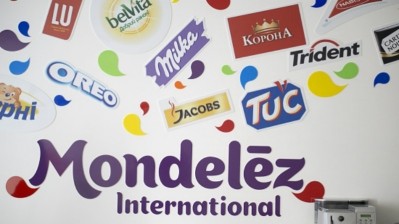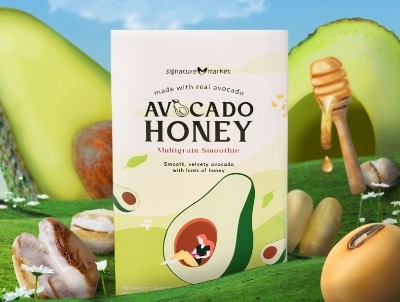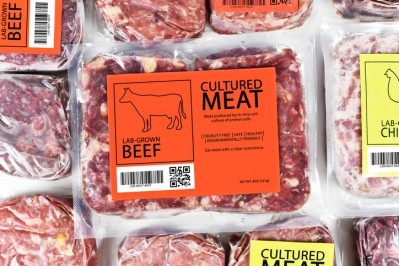Six top trends set to impact APAC’s F&B development in 2021 - featuring Mondelez, Chobani, Kirin, Nestle and more

1) Alternative protein trends: Plant-based, cell-based and precision fermentation
The alternative protein sector has received a great deal of attention over the past year, with more and more firms launching products or announcing new technology/prototypes.
The industry still has a long way to go before reaching mainstream status but come 2021 leaders in alternative protein areas such as plant-based, cell-based and precision fermentation all believe that further growth is incoming for each sector.
In the plant-based area, localisation is expected to be the main trend in Asia according to OmniFoods Founder David Yeung.
“We are seeing a lot of startups in the region now getting funding, so I believe there’s no doubt that there will be many exciting brands and products launching in 2021 and beyond,” he told FoodNavigator-Asia.
“A trend here in Asia is that more Asian companies will be developing plant-based foods to fit the Asian palate – so I’m thinking plant-based dim sum and luncheon meat in Hong Kong, as well as dumplings in China.
“The other area I believe we will see growth in in Asia is plant-based milk, as many Asians are lactose intolerance, so we should not be consuming so much dairy [and firms are getting aware of this].”
Yeung also opined that plant-based foods can be considered mainstream in Asia as of 2020, banking on achievements in China such as Beyond Meat entering and establishments such as Starbucks and McDonald’s offering plant-based options.
Over in the cell-based sector, optimism is high following Eat Just’s recent regulatory approval for the commercial launch of its cell-based chicken ingredient in Singapore, with most firms believing the entire market is set to see a boost in Asia.
The regulatory progress coupled with COVID-19 which showed the vulnerability in the food system, will drive the cell-based market, according to Hong Kong’s cell-based seafood company Avant Meats, which last year developed a cell-based fish maw prototype, and recently a fish fillet prototype.
Avant Meats co-founder and CEO Carrie Chan said: “Three to four years ago, cell-based was deemed a strange and scary idea and maybe not taken as seriously [but with more companies in the space and coming up with prototypes ranging from cell-based chicken, beef to seafood], people are starting to see potential with these physical prototypes that look the same (as animal meat), taste the same and even cook the same.”
“Now, there are also 60 to 70% acceptance for cell-based, but some people are still on the fence.”
“The COVID-19 pandemic also exposed the vulnerability in the food supply chain, and cell-based can be one solution to overcome this, as business look to build resilience in their supply while consumers seek traceability.”
“Overtime, consumer acceptance will drive investor acceptance which drives producer acceptance.”
As for precision fermentation, experts believe that the potential for this is the highest in the long run due to the usage of existing technology and the broad range of alternatives that can be produced, from dairy proteins to lipids and more.
Fermentation tech firm Change Foods CEO and Co-Founder David Bucca told us that one main driver for this particular sector will be the speed at which it can reach price parity compared to cell-based technology, particularly for dairy products.
“Cheese made using this tech also has an advantage over plant-based cheeses in terms of nutrition, being allergen-free, costs, and functionality such as stretching and melting,” he said.
Change Foods recently closed a US$875,000 funding round which will be going to its prototype development, so 2021 can be expected to see further growth both for the firm and the fermentation sector.
2) Health and wellness still on-trend for snacks
The health and wellness trend in snacking was already on the rise in APAC previously, but has been nothing short of meteoric ever since the COVID-19 pandemic hit.
Global snacking giant Mondelez International in particular believes that snacks with a health and wellness focus will continue to trend post-COVID-19, with the firm’s CEO Dick Van De Put saying that: “Snacking will continue to thrive as part of our new normal, finding its place alongside a renewed focus on health and an ever-more holistic view of well-being.”
Mondelez ANZ and Japan Director or Marketing for Candy Lauren Fildes told FoodNavigator-Asia that consumers are placing more and more importance on the nutritional profiles of the snacks they consume.
“The nutritional profile of the snacks people eat is increasingly important to consumers across the globe, including within key markets in APAC, and we expect this trend to continue to varying degrees in 2021 and the years ahead,” she said.
“Consumers continue to balance their desire to consume a healthier diet overall with their desire to indulge, and this is certainly playing out across APAC to different extents in individual markets.”
The Oceania market is known for its focus on healthier options when it comes to food, but even in South East Asia, a similar trend is playing out, though in a slightly different way.
“When it comes to the health and wellness trend, ASEAN consumers are very aware of the role that snacks play in their lives, and whether or not snack firms are able to immediately offer healthier alternatives is not as important as the transparency they provide about what these snacks contain,” Mondelez Indonesia President and Managing Director Prashant Peres told us.
“This is important to them in the context of mindful snacking, which means knowing what’s in a snack and being able to evaluate for themselves - so they know that something might have sugar in it, but what’s more important to them is to know the amount and type and so on of this transparently.
‘That said, definitely consumers in the region are being more conscious about what they eat as health concerns have risen after COVID-19 hit, so one thing that is important to them is the use of high quality ingredients in their snacks.”
Another snacking area where health and wellness is an especially important theme is snacks for children, and Whole Kids Founder Monica Meldrum told us that this has become even more important recently.
“The consumer trend for just about every food and beverage sector has become more health and wellness skewed ever since COVID-19 hit – and this has been very clear in the children’s food and snacks sector too, [as parents are worried as well],” Meldrum told FoodNavigator-Asia.
“The concern here is to support kids’ immune systems, and help this to grow, but there’s always a dilemma when trying to get kids to take their supplements as this is not something they would find natural.
“[So] snacks may be the answer – [We have] a probiotic cocoa snack which tastes good even though it’s actually got the first organic, plant-based, vegan strain of probiotic in it, and this is a much easier, more natural way to get kids to get their probiotics and boost immune systems, in addition to also having omega-3 and omega-6 for brain development.”
Whole Kids is the largest organic children’s snacks brand in Australia, with presence in Singapore, China and soon-to-be Malaysia.
Snacks giant PepsiCo also concurred with this, saying that it has seen consumers seek out more better for you snacks especially during lockdown periods.
"We will continue to focus on our trusted and iconic brands like Smith’s whilst also offering innovative new products under these core brands," PepsiCo Head of Consumer Insights and Strategy Felecia White told us.
"For example we recently launched Smith’s Oven Baked – a baked potato chip that has 50% less fat when compared to our crinkle cut potato chips."
3) Shift in the concept of convenience post-COVID-19
Following on from the COVID-19 pandemic outbreak where staying home has become more of a norm, the concept of convenience has changed for consumers, which can be reflected in format selections.
For example, Chobani Australia Managing Director Lyn Radford told us that she has observed a shift in high consumer demand from single-serve yoghurt pots or pouches for on-the-go consumption, to bigger bulk purchases.
“Convenience on-the-go was very much the key for the yoghurt industry previously – COVID-19 has drastically changed that,” she told FoodNavigator-Asia.
“We’ve definitely seen a change away from single-serves such as pouches for kids’ lunchboxes to bigger single purchases, such as 1kg tubs. I reckon this is happening across multiple industries, not just yoghurt.
“People are spending more time at home, so it makes more sense to buy these and scoop out what they eat each time. It’s more convenient to do that now, in that sense, as opposed to having to make multiple trips to the store just to buy single-serves when not going to work or school or the gym.”
Over in Indonesia, Peres concurred with this opinion, saying that Mondelez has also observed a change in buying behavior characterized by consumers making fewer trips to stores and larger purchases per trip.
“People just don’t want to go outside and make contact with others as much due to COVID-19, which is understandable,” he said.
“Impulse buying has definitely reduced so on-the-go categories have been impacted, though in-home consumption has increased so all brands that play well at home are doing well. Things for in-home cooking or baking of course, and also snacks as consumers still want to snack on familiar, comforting brands at this time.
“The key difference is that because they want to make fewer trips outside, what’s more convenient is now to make larger or more purchases at one go.”
There’s also an economical perspective to this – COVID-19 has left many consumers concerned about their spending and more likely to make more economical choices.
“COVID-19 has also hit a lot of people hard economically, so bigger tubs are also better value for money,” said Radford.
Chobani Australia is moving in line with this to launch a range of larger-tubs for its flavoured yoghurts, where previously this large formats were only available for its original flavour.
So although globally things are opening up and consumers are returning to work, school and so on, food and beverage manufacturers would do well to continue maintain a balance in terms of product formats - both in terms of on-the-go options and larger economy packs - as it is likely that consumers will continue to be economically cautious for some time to come.
4) Ambient and immunity-boosting dairy products trending in China
The dairy sector in China has seen exceptionally strong growth in 2020, boosted by strong government support in addition to consumers seeking out immune-boosting food and beverage options.
The Chinese government has been campaigning for local consumers to consumer more dairy products and even made a groundbreaking move earlier this year to formulate new standards for dairy permeate imports – all indicating that higher dairy consumption is likely to continue moving forward.
Chinese dairy giant Yili believes that local dairy growth in China will continue in 2021 and beyond, particularly as local consumers now have an increased appetite for healthy foods and beverages after COVID-19.
“Chinese consumers are on the lookout for products boost nutrition and improve immunity, and dairy products have been exceptionally popular in this regard,” Yili Innovation Centre Vice General Manager Dr Yun Zhanyou told us.
“This has further boosted consumer demand for dairy products, [in addition to its wide availability] via e-commerce, where sales have been accelerating even quicker after COVID-19.
He added that at present ambient products are trending in China’s dairy industry as consumers look to keep a good supply of dairy at home for daily consumption.
“In order to drink milk more conveniently and limited by curfew-liked inconveniences to going out, many families are choosing to buy dairy products that can be stored at room temperature, and have long shelf life for [longer] storage and [to ensure] daily supply,” said Dr Yun.
5) Thirst for low-to-no alcohol beers in Japan
Low-to-no alcohol beer is considered a relatively new segment in Japan, but sales between January to October 2020 saw a 5% increase even amidst the COVID-19 pandemic, in sharp contrast to local sales of traditional beer which dipped by 9% - a telling occurrence in a country traditionally known to be heavy in beer consumption.
In Japan, the beer sector is categorised into regular beer, Happoshu (low-malt beer, lighter taste, lower calorie), and New genre (also known as third beer, non-malt beer, brewed from peas or corn). Low-to-no alcohol beer usually comes from the latter two.
The successful way in which this category has been trending in Japan has drawn the attention of big names such as Kirin and Sapporo, both of which have seen significant upticks in their new genre beers – 6% and 30% respectively – and who both believe that this trend is going to continue to be a significant one moving into 2021.
Both firms agreed that the trend is being driven by the COVID-19 pandemic, which may have resulted in insecurity in future income, making consumers more price conscious. This led to the growing consumption of beverages with lower price orientation, such as new genre and happoshu which are taxed at a lower rate than regular beer.
“As a result of COVID-19, there is a clear trend of low-price orientation and products promoting a healthier lifestyle, from beer substitute products to products with functions that contribute to health and casual drinks that can be enjoyed in daily life – [all of these are driving the low-to-no alcohol trend in Japan],” Kirin Holdings Corporate Communications’ Ataka Takashima told us.
Sapporo Breweries Public Relations Manager Junko Fukuchi concurred, adding that: “Japanese consumers are constantly looking for brands that can offer products with new values, whether through a new functional benefit, or selling an experience or story.”
Other driving factors for the increase in low-to-no alcoholic beverages in Japan include younger consumers’ demands for beverage diversification, a fear of social problems caused by improper drinking such as drunk driving accidents and growing consumer health consciousness.
Japan also recently opened the country’s first non-alcoholic bar in Kyoto, serving more than 100 types of non-alcoholic cocktails, which is expected to boost the local low-to-no alcohol segment even further on an upward trend.
6) Better-for-you adult social beverages with cascara
Social beverages are most commonly associated with alcoholic drinks, but Nestle Australia is pioneering the way forward for a whole new type of non-alcoholic, better-for-you ‘adult social beverage’ which the firm believes will be the trending new beverage for 2021.
“We’ve seen the adult social beverage space really evolve over the past year, as Australian lifestyle habits and behaviours continue to change and we seek out ‘better for you’ alternatives. So we’re thrilled to be leading the charge in this space by launching new NESCAFÉ NATIV Cascara,” said Nestle Oceania Director of eBusiness, Strategy and Marketing Martin Brown.
“Its flavour profile is entirely unique to Australia in that it uses local native ingredients and coffee berry husk, to create a refreshing ready-to-drink beverage which can be enjoyed in any social occasion – I can’t wait for people to try it.”
The new drink range will be a sparkling RTD option that will bridge the gap between ‘overly sweet soft drinks and health toting kombucha’. It will be made from cascara, or coffee berry husk and Nestle will be launching this in three very localised variants to appeal to Australian consumers - Classic, Kakadu Plum, and Lemon Myrtle and Pepperberry.
Nestle has opted to utilise cascara as the base of this new range as it believes that this in itself is likely to be the most up-and-coming ingredient of 2021.
“As its popularity starts to grow, cascara is on trend to be the ingredient of 2021 across multiple beverage categories including, RTD, spirits and confectionery,” said the firm.
Indeed, cascara has been emerging as a trending ingredient in the past year with not only big food firms such as Olam getting in on the trend, developing a range of cascara products such as teas and jams and toting its health benefits, but also smaller start-ups like I am Grounded developing healthy snack bars using upcycled coffee fruit.
Nestle’s attempt to use cascara as an sparkling drink is a first though, but if the trend of better-for-you adult social beverages does catch on, as does cascara as an ingredient, then the firm certainly looks to be on the right track with its new creation.


















